Design
The KiCsa application design is important because it is a major technical requirement of the project.
Choose the view you want of the KiCsa design :
- Architecture
- Use case view
- Static view
- Process view
- Deployment view
Architecture
The KiCsa architecture is typically a 3-tier architecture, with :
- a Web client
- an application server layer, splitted in
- presentation layer : Web logic control, dynamic page build
- service layer : actions on business objects
- business layer : persistent on non persistent business objects
- integration layer : glue between memory data and data persisted in the KiCsa repository
- an data repository
| KiCsa architecture | Version | Alpha | Comment | |
|---|---|---|---|---|
| Release | 1 | |||
| Fixpack | ||||
| Couche | Pattern | Maintenance | ||
| Platform | J2EE | 1.2 | Not going beyond because WAS 4.03 support is a requirement | |
| Persistence | JDBC | 2.0 | Java DataBase Connectivity including DataSource | |
| JDO | 1.0 | Java Data Objects standard | ||
| Transactions | JTA | 1.0 | UserTransaction | |
Use-case view
This section describes use cases realizations.
Skill tree navigation
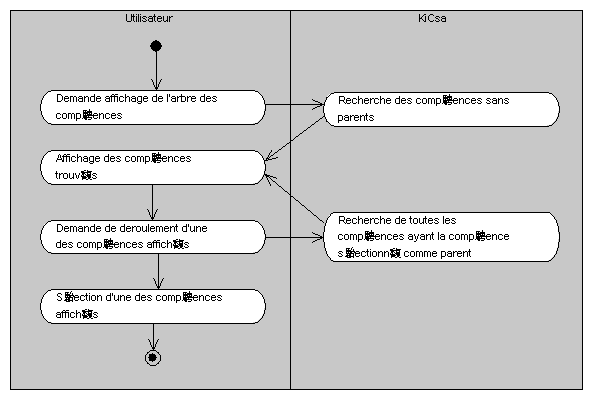
Static view
Subsystems
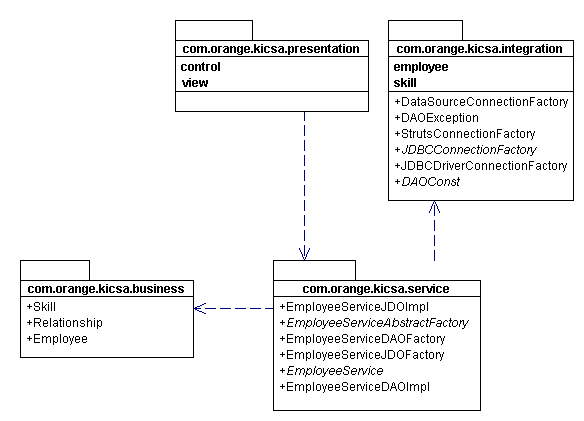
Presentation
Skill control

Service
Skill services
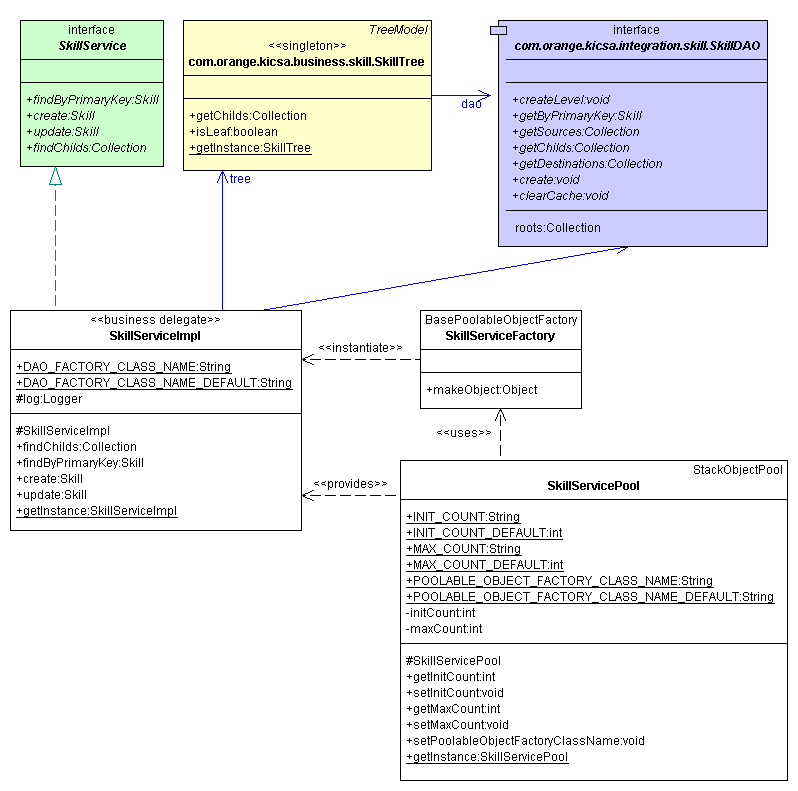
Administration services
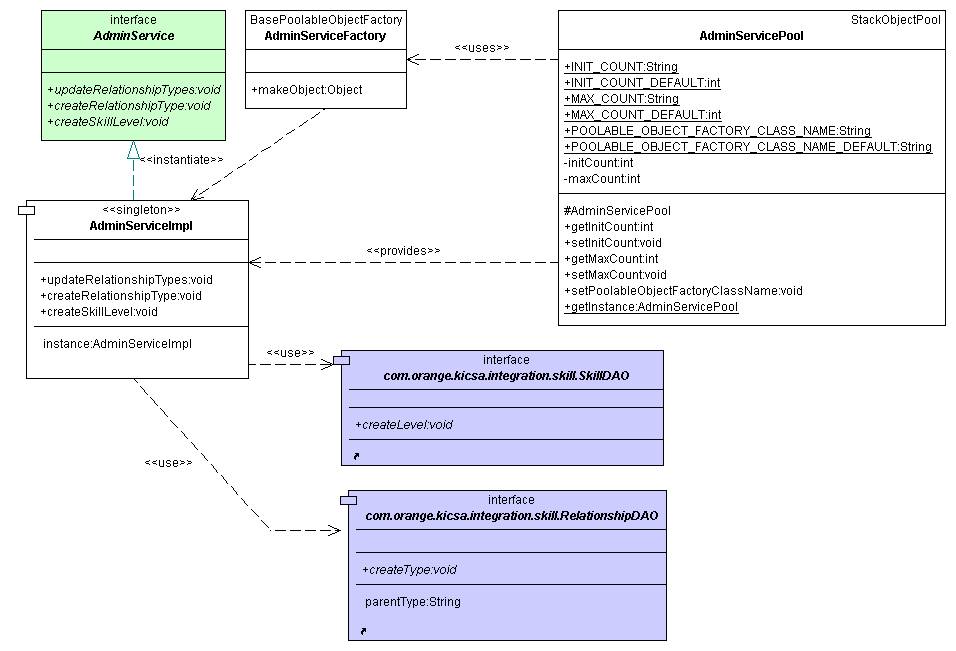
Business

Skill-related business objects
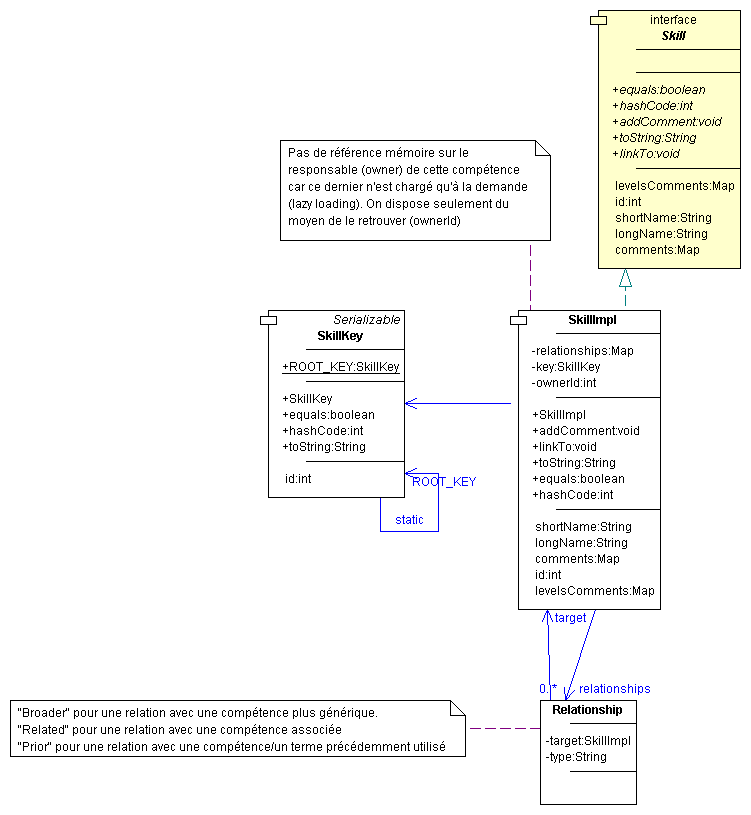
This way a skill network can be builded like this :

Skill tree view
Providing a tree view of the skill network.
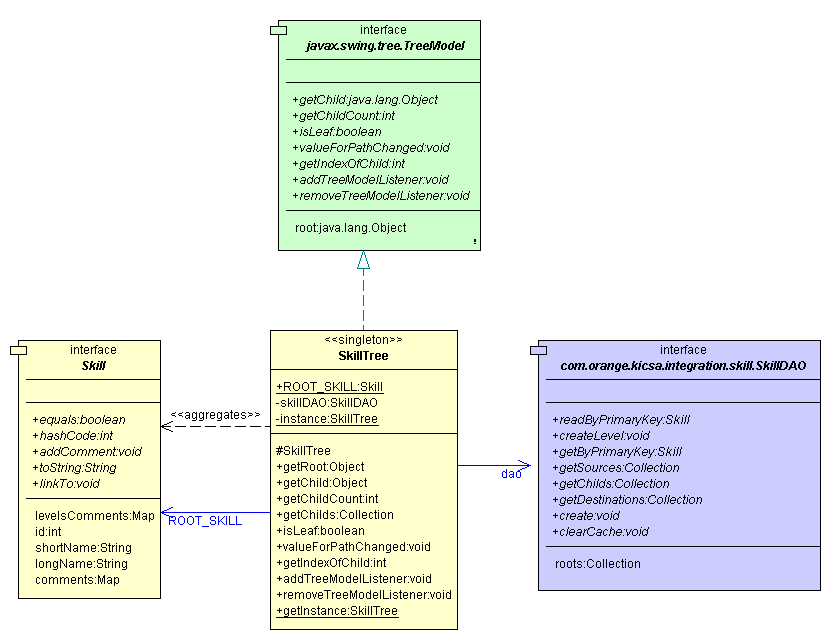
Employee business objects
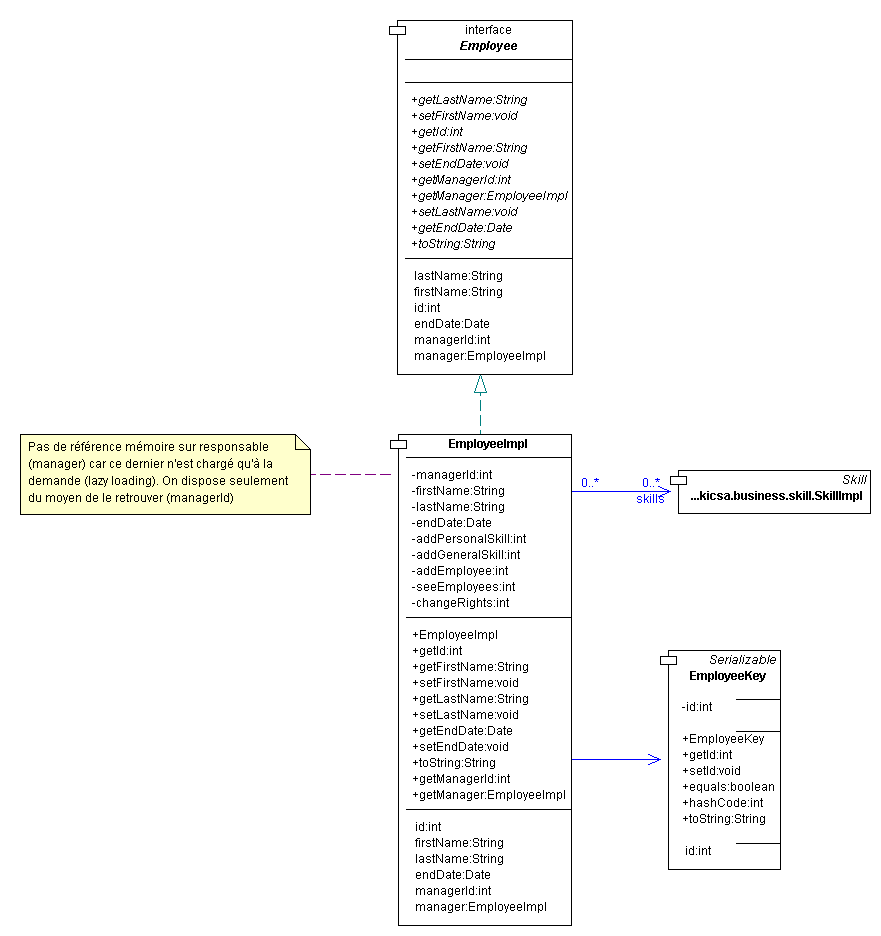
Integration
Skill data integration
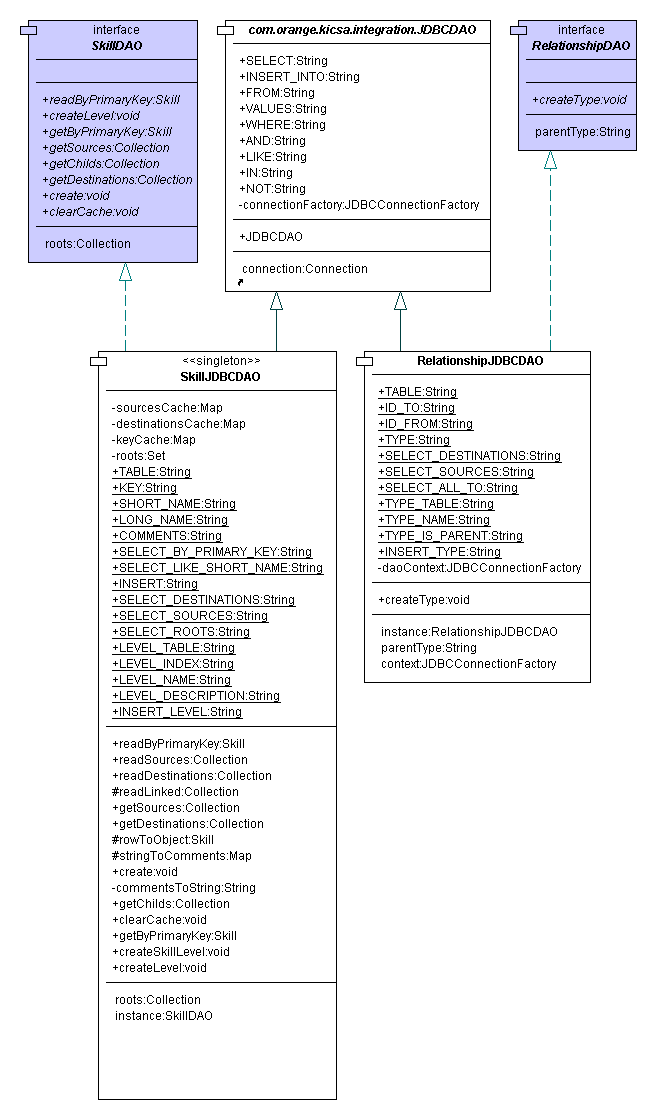
Employee data integration
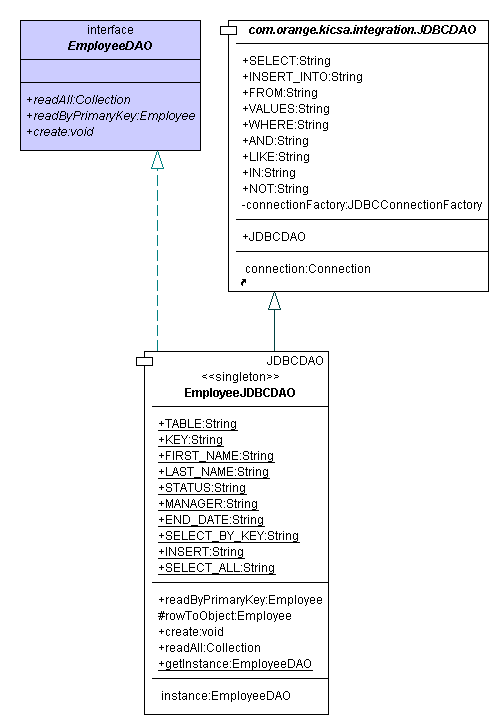
Common layer
Preferences API
J2SE 1.4 Preferences API built for J2SE versions prior to 1.4.

Patterns
KiCsa use a number of patterns to solve common problems :
| KiCsa design patterns | Version | Alpha | Comment | |
|---|---|---|---|---|
| Release | 1 | |||
| Fixpack | ||||
| Couche | Pattern | Maintenance | ||
| DP | DAO | com.orange.kicsa.integration.util. JDBCDAO | Encapsulate data access | |
| Abstract factory | com.orange.kicsa.integration. AbstractDAOFactory | Parameterizable set of implementations | ||
| Facade | kicsa.service.ability | Reduce complexity and provide low coupling | ||
| MVC | Struts | Struts' MVC2 architectural pattern | ||
| Commande | Struts action | |||
| Workflow | initiation | rights | ||
| action | duties | |||